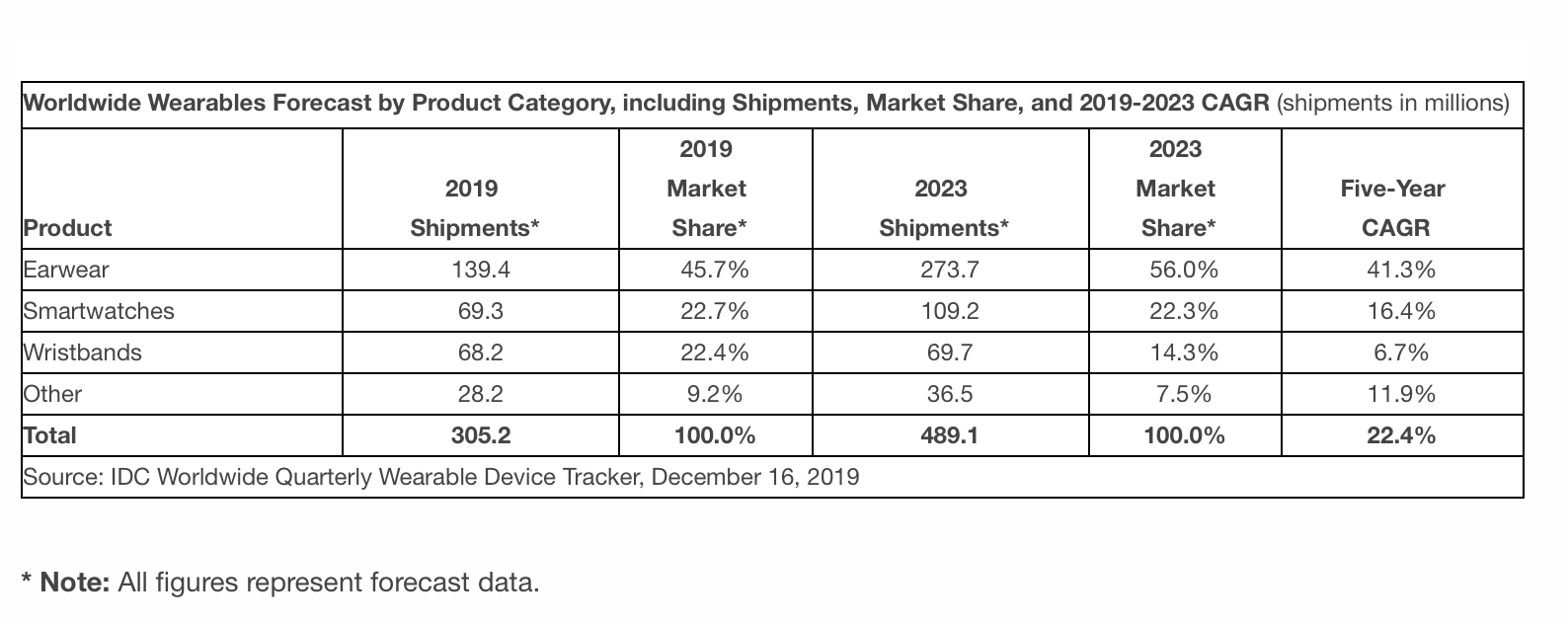Continued end-user demand, proliferation of devices, and declining average selling prices will propel the worldwide wearables market in the years to come, according to the latest forecast from International Data Corporation’s (IDC) Worldwide Quarterly Wearable Device Tracker.
The research group says the global market for wearables is on track to ship 305.2 million units in 2019, up 71.4% from the 178.0 million units shipped in 2018. From there, total volumes will grow to 489.1 million units in 2023, resulting in a compound annual growth rate (CAGR) of 22.4%.
“Wearables started out as a device for early adopters and morphed into multiple devices for the mass market,” said Ramon T. Llamas, research director for IDC’s Wearables team. “In the process, wearables have accomplished several objectives: enable greater convenience, surface new insights, and keep the user connected in ways that other devices – even the smartphone – have been unable to do. Continued development and innovation will cater to current customers and attract new ones in the years to come.”
“Underpinning the growth in the wearables market has been a drastic reduction in average selling prices,” said Jitesh Ubrani, research manager for IDC’s Mobile Device Trackers. “While companies such as Xiaomi have focused on reducing costs by commoditization, market leaders like Apple that typically focus on the premium segment are also playing a crucial role in lowering prices. With a starting price of $199 for the Series 3, Apple is bound to put pressure on other smartwatch makers to make their devices more wallet-friendly.”
Accounting for the majority of shipment volumes throughout our forecast is earwear, which is set to reach 139.4 million units this year and nearly double to 273.7 million units in 2023. For an earworn device to be considered a wearable by IDC’s definition, it must offer functionality beyond audio, like a smart assistant, health and fitness tracking, or audio experience enhancement. Already, multiple vendors have capitalized on this emerging trend with devices that span the product spectrum, from truly wireless earbuds to full over-the-ear headphones, and a wide range of prices, from as little as $50 to several hundreds of dollars.
69.3 million smartwatches will ship in 2019 and total volumes will reach 109.2 million units worldwide in 2023. Apple’s watchOS will remain in front throughout our forecast by a wide margin and function as the measuring stick against which all other smartwatch platforms are compared. Still, there is room for other platforms to grow: Android will have a strong following with kid-focused smartwatches; Samsung’s Tizen will cater to Samsung smartphone owners with features rivaling watchOS; and Google’s WearOS will benefit from having the longest list of hardware partners and the addition of Fitbit OS’s health and fitness capabilities.
Wristbands will experience slower growth (6.7% CAGR) compared to the rest of the market but will maintain a steady presence throughout our forecast. Thanks to a combination of lower prices, a simple and straightforward value proposition, and deployment among corporate wellness programs, wristbands will enjoy a place in the wearables market, even as smartwatches gain salience.

